Large refractors like the The Altair Wave Series 130EDT-F triplet always have a special air about them, they look like a proper telescope, as it were, and the 130EDT-F is certainly impressive, while the quality and build are exceptional.
The tube rings, for example, come complete with carrying handle and are finished in red anodising.
They are meticulously machined with bevelled edges and give an indication of the attention to detail that has been lavished on the fit and finish of this telescope.
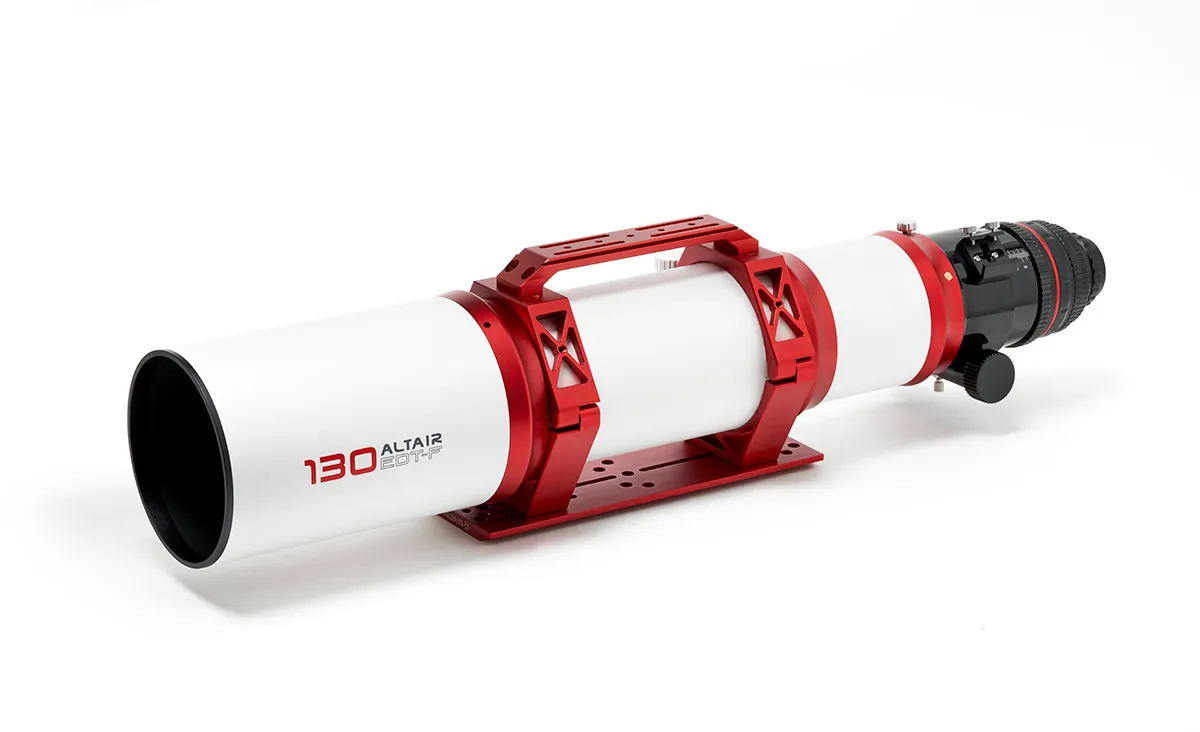
The dovetail bar has a Losmandy-style profile. We found this helped with balancing the 130EDT-F, something which can prove a little tricky with large refractors.
Weight-wise, the package tips the scales at around 12kg, which is perhaps on the hefty side, but reassuring that the materials used are solid and robust enough to provide years of enjoyment when investing in this telescope.
With a focal length of 905mm (f/7) the 130EDT-F hits the sweet spot for observing and astrophotography alike.
Additional options are available to enhance the photographic ability of the telescope, including a dedicated flattener.
We were loaned a matching 0.8x PlanoStar reducer lens, which took the focal ratio down to f/5.6.
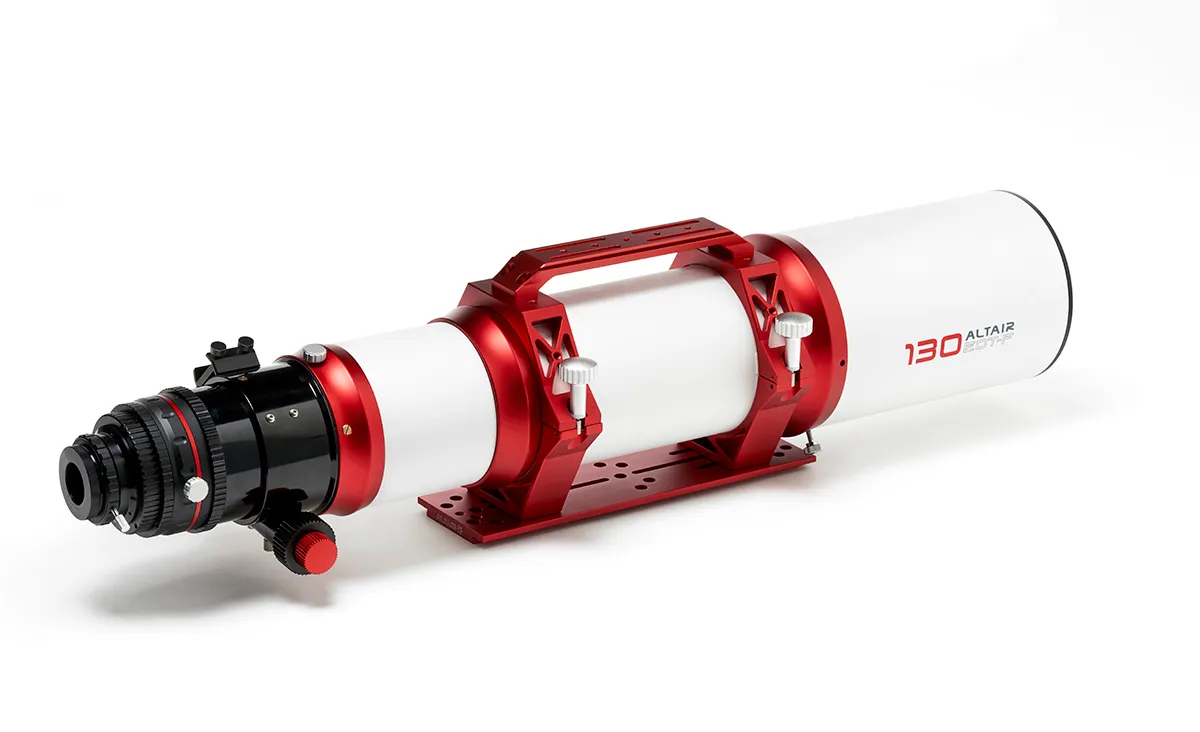
With a brief window of clear skies available, our first light from the telescope came from a CCD camera without the reducer, the target being the Hercules globular cluster, M13.
These initial images demonstrated that the triplet lens was producing sharp, distinct stars and the surrounding star field was free from any optical issues.
Suitably impressed, we turned the scope towards the supernova that had appeared in NGC 4647, and almost without effort the large optics revealed not only the exploded star itself, but dozens of smaller, far fainter distant galaxies.
Considering the images were taken in suburban skies in late spring without astronomical darkness, they provide convincing evidence for the good, contrasty views from the 130EDT-F, no doubt helped by the lens coatings and internal baffles.
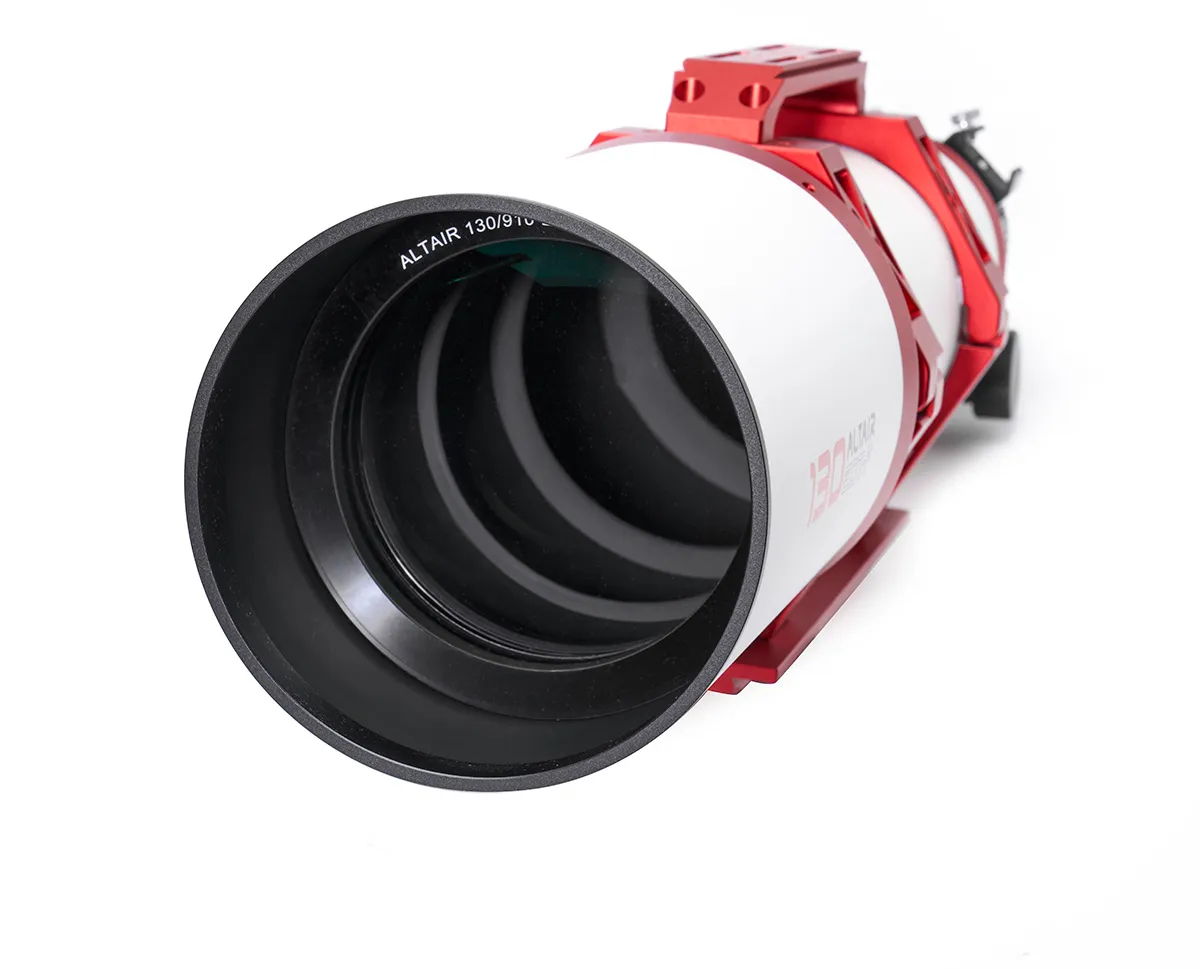
As the Moon became dominant, we switched to visual use of the telescope, using our own star diagonal and eyepieces.
Our 13mm, 100° eyepiece gave 70x magnification, and on the Moon, illuminated about 50% or so; high in the sky, the results were breathtaking: the Moon almost appeared to be in 3D.
Triplet telescopes are perhaps a luxury for observational use, but presented with views like these, that luxury seems perfectly justified.
Switching to our 4.5mm eyepiece ramped up the magnification to 200x, which was pushing the seeing, but glimpses through steadier patches revealed craterlets within craters and definition inside illuminated crater walls, all without distracting colour artefacts on bright edges.
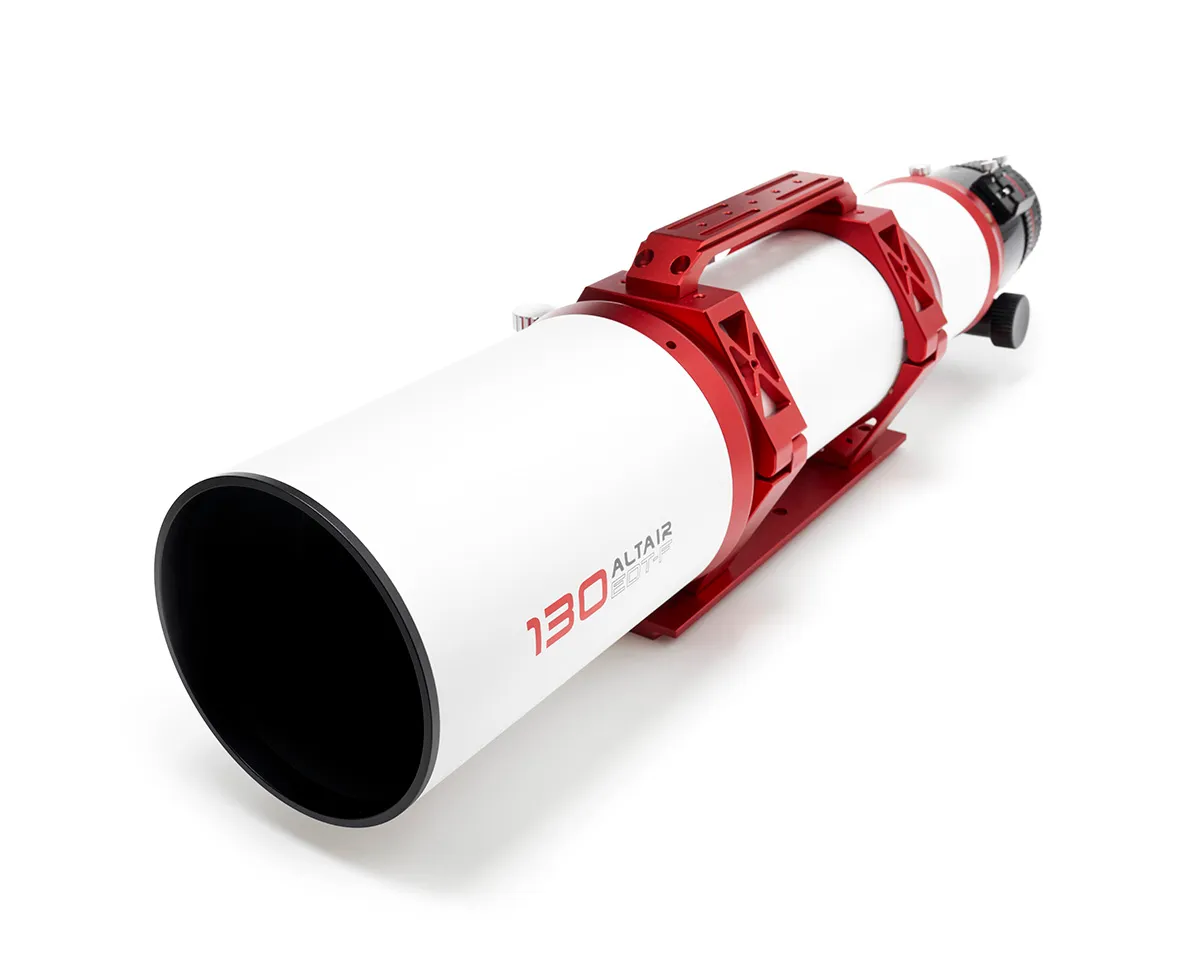
Our favourite view came from our 10mm eyepiece though, at 90x, with sharp views of craters, ridges and flows within the lunar maria.
The skies weren’t really dark enough for deep sky objects, but M13 was visible with reasonable contrast and good distinction between stars, and we even got both galaxy cores from M51, the Whirlpool Galaxy, thanks to the telescope’s 130mm lens.
Our observing notes included this sentence: "This is the kind of telescope that could tempt an astrophotographer to leave the camera and fit an eyepiece instead, offering lovely crisp views that are comfortable to observe."
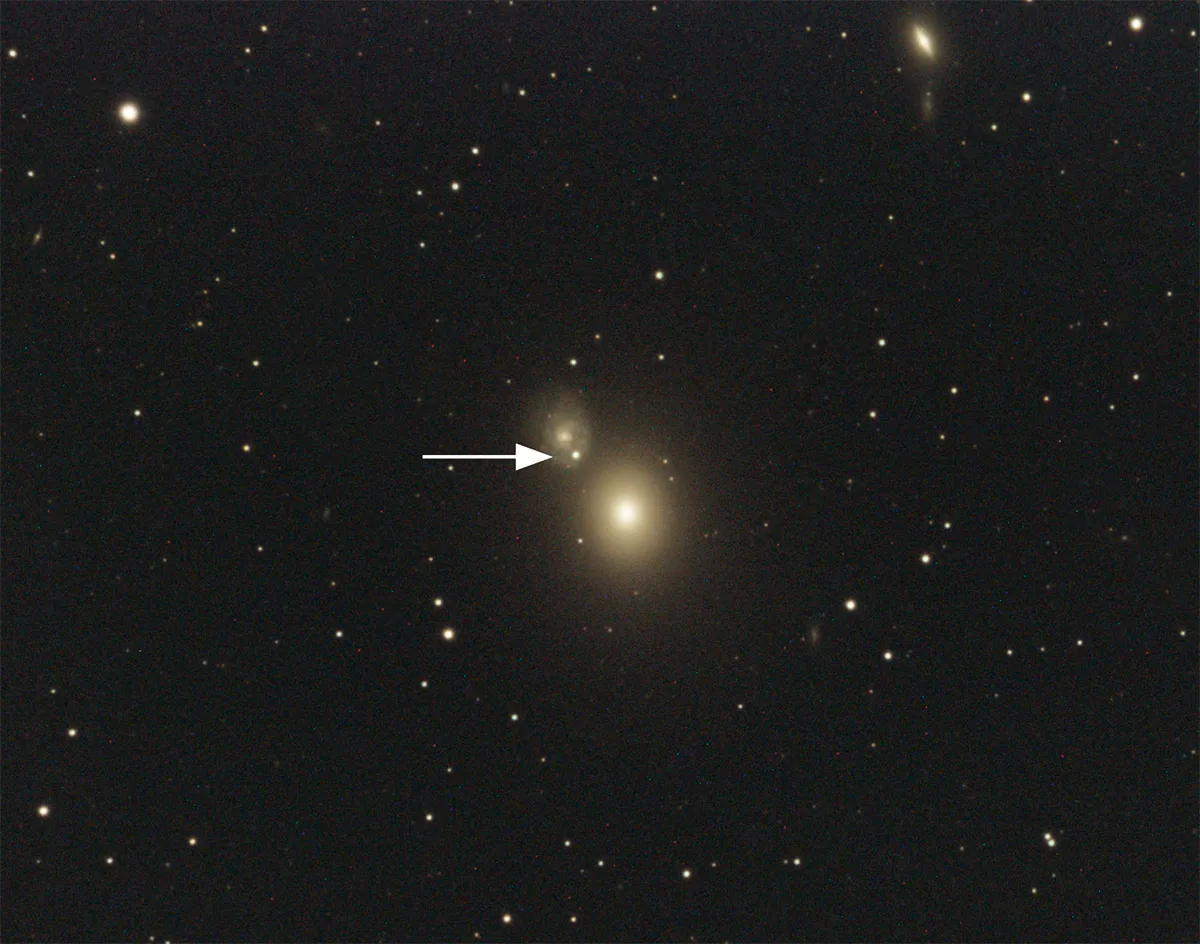
We did go back to the camera though, this time with the 0.8x reducer in place, which screws firmly to the focuser.
Again we were very impressed with the images and the 130EDT-F proved itself very capable on galaxies and the Iris Nebula.
In particular, the updated focuser was a joy to use. Not only is it slick and responsive to work with, but locking the position was accurate without pushing the image off.
The whole focuser can be rotated, or just the camera, with easy-to-use fittings.
In short, the 130EDT-F is an all-round, high-quality large refractor, providing excellent views and images comparable to more expensive telescopes.
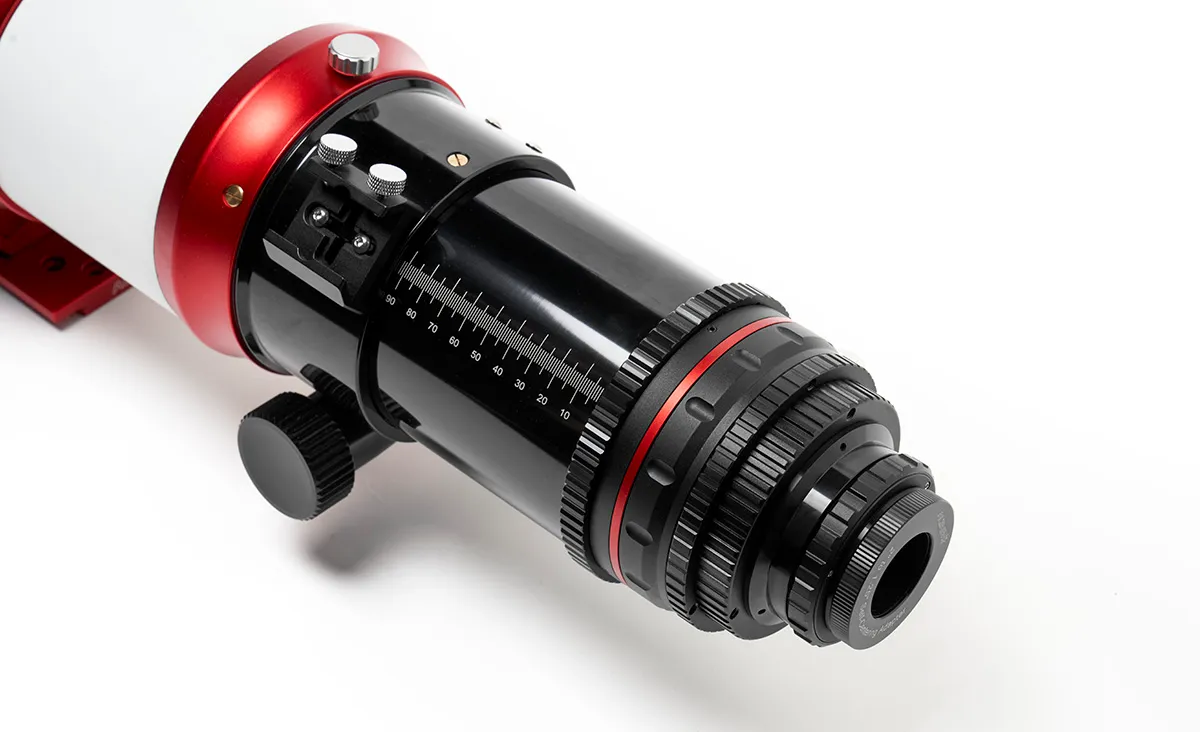
Altair Astro's Wave Series
Altair Astro provides an optical guarantee with the Wave Series refractors – each unit has a minimum performance level.
Each telescope comes with a printed optical report relating to the serial number on the lens.
Our review model boasted an impressive 0.972 Strehl reading, which is a measurement of optical quality, with 0.95 being the baseline for the Wave Series.
The proof of the pudding is in the eating, though, and our results both with a camera and an eyepiece do bear those figures out.
Taking an edge-of-field star, captured by our one-shot colour CCD camera, we split the channels into red, green, and blue, blew the image up to 25x and compared the star sizes.
There was negligible observable difference between the star sizes, demonstrating that the triplet lens, having been carefully aligned, performs its job of bringing all three colours into a single point of focus.
This optical performance makes the 130EDT-F a desirable telescope for use with increasingly popular and capable one-shot colour astronomy cameras, and certainly with an eyepiece.
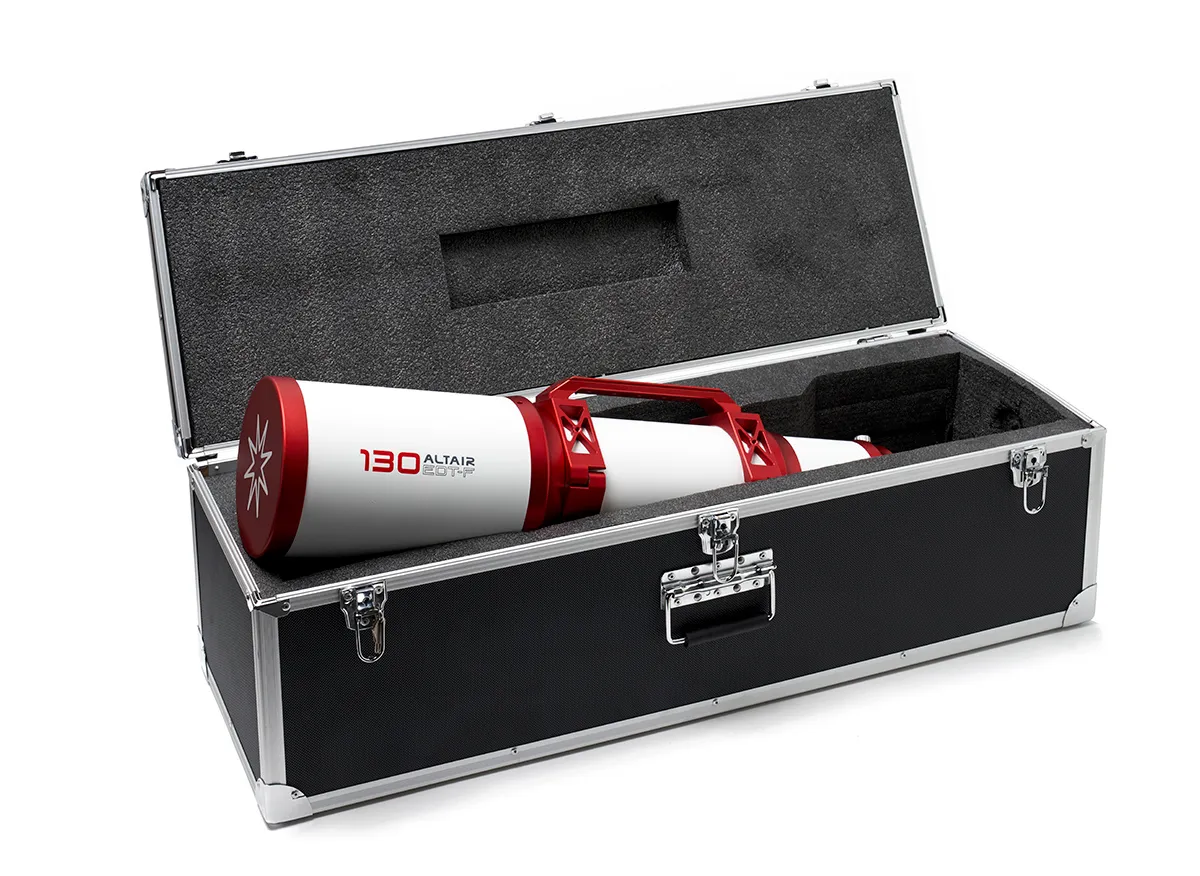
Altair Wave 130EDT-F F7 best features
1
Clamp rings and Losmandy bar
A full-length 335mm Losmandy-style bar provides a solid and firm base for the tube rings, with no unwanted flexing. The carry handle serves a dual purpose as an accessory rail, with options for attaching a guidescope or similar, while the rings themselves have additional threaded holes for attachments.
2
M92 focuser
The focuser is an M92 (92mm) rack and pinion design with dual speed controls. The drawtube has graduated markings for quick repeatable setup and it is smooth and accurate in use. Dual rotation options, a self-centring clamp and a finderscope shoe round off this impressive unit.
3
Dew shield
The dew shield is nicely made and slides smoothly, with 138mm of travel and no flopping when fully extended. With the tube rings in place it only retracts about 76mm, but taking the tube out of the rings allows full retraction and access to the lens for cleaning. The lens cap is aluminium.
4
Removable section
The rear 100mm section of the tube is removable. This helpful upgrade allows observers with binoviewers to attach them directly to the telescope with no Barlow lens. Considering our results with a single eyepiece, this would likely make a formidable wide-field instrument when assembled with a binoviewer.
5
Shipping case
The telescope is supplied in an aluminium transport case with foam inserts for protection. Although Altair Astro points out that it is just for preserving the telescope during shipping, it will make a useful and safe storage box while the scope is out of use, and has locking clasps.
Vital stats
- Price: £2,499
- Optics: Air-spaced triplet
- Aperture: 130mm
- Focal length: 905mm, f/7
- Focuser: 92mm rack and pinion with 1:10 gearing
- Extras: Aluminium storage case
- Weight: 12kg with rings and Losmandy bar
- Supplier: Altair Astro
- Tel: 01263 731505
- www.altairastro.com
This review originally appeared in the August 2022 issue of BBC Sky at Night Magazine.
